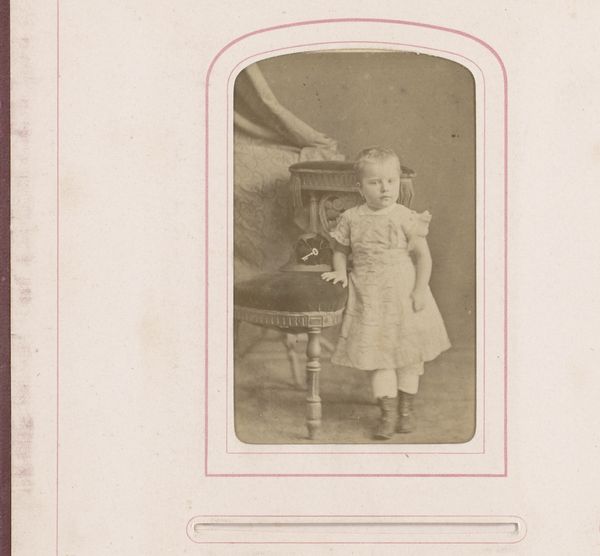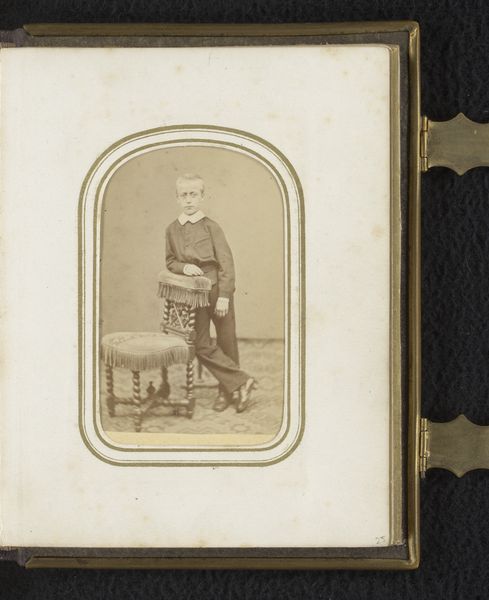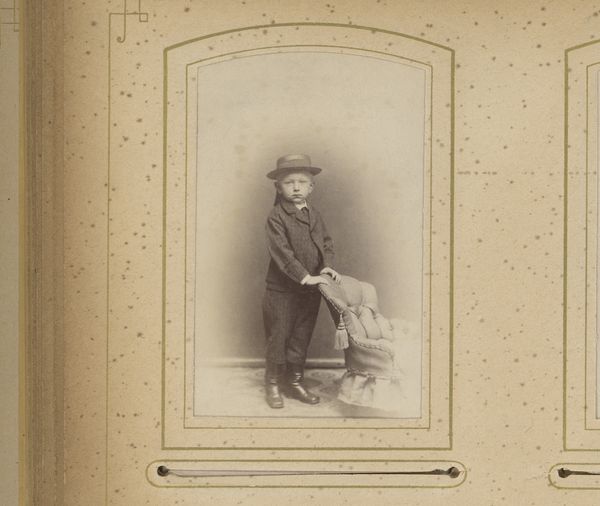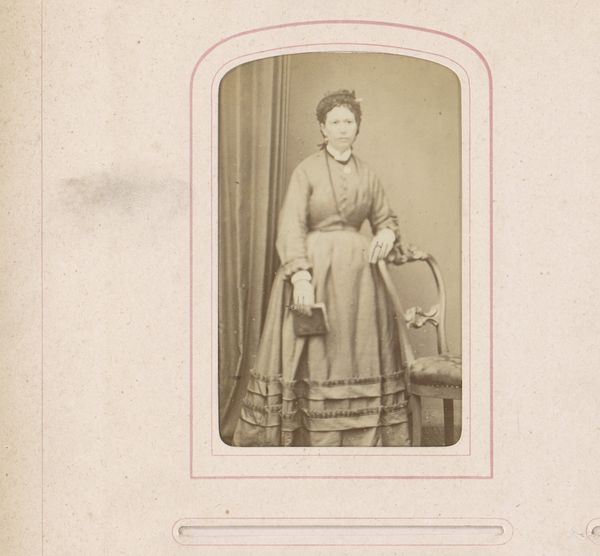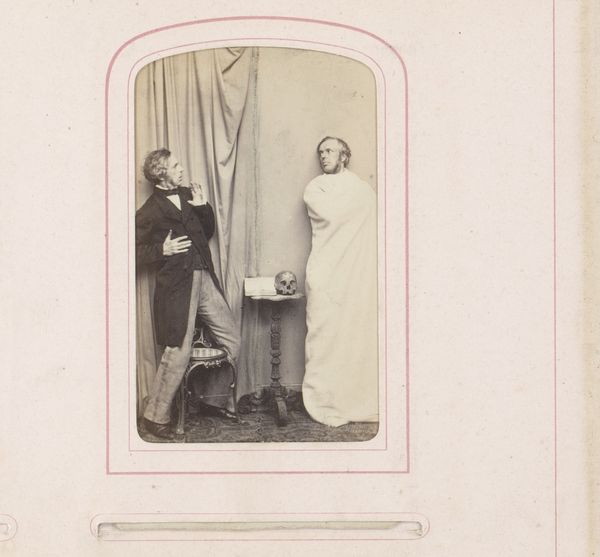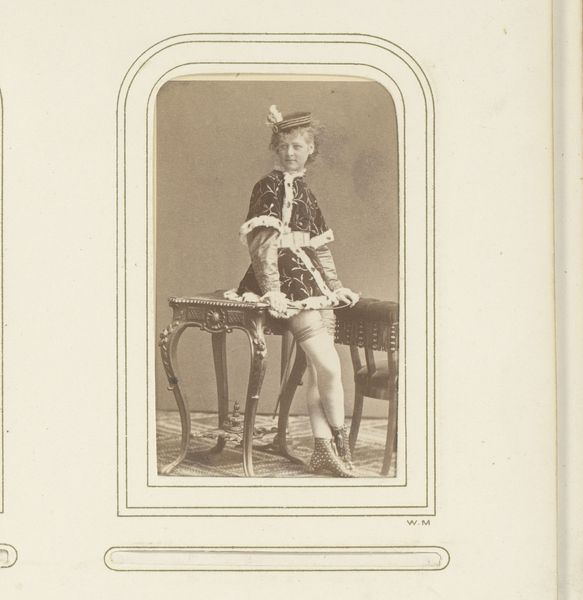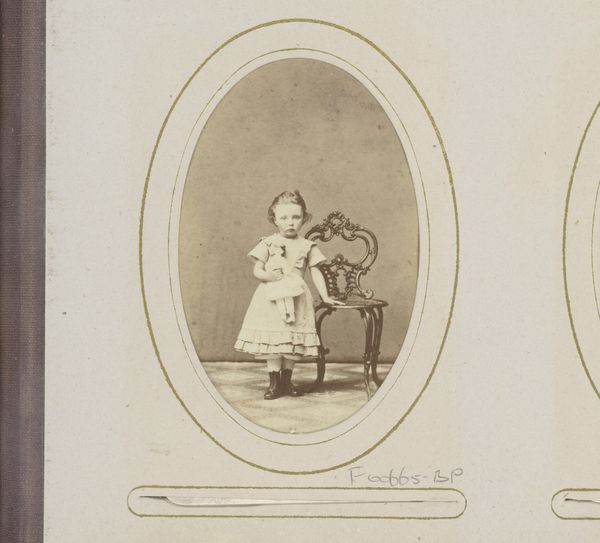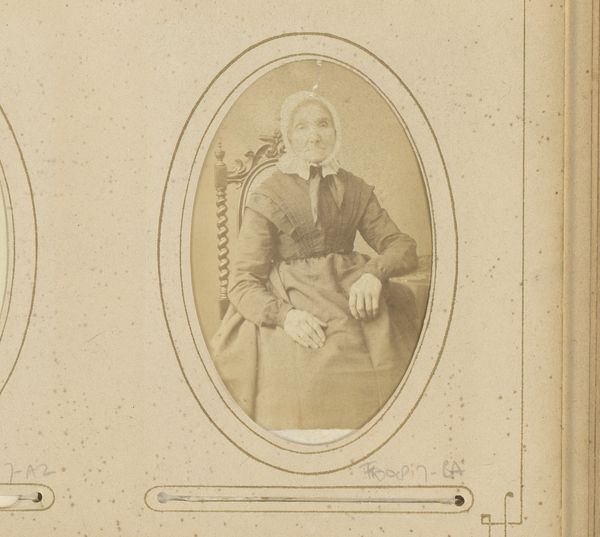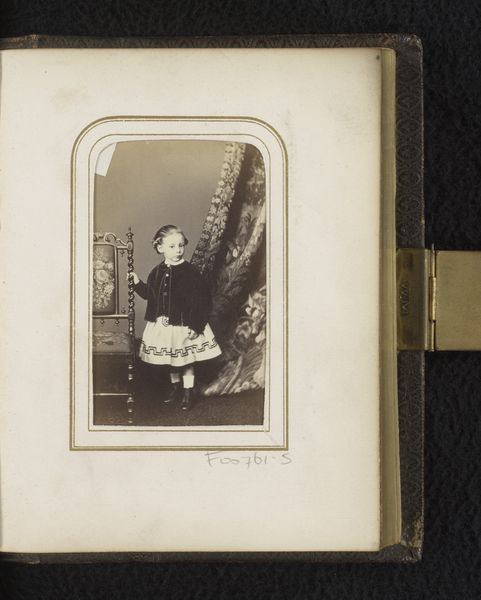
photography
#
portrait
#
photography
#
historical photography
#
child
Dimensions: height 100 mm, width 62 mm
Copyright: Rijks Museum: Open Domain
Curator: Let's turn our attention to this photographic portrait from between 1867 and 1880, found here at the Rijksmuseum, titled "Portret van een kind staand op een stoel"—or, "Portrait of a Child Standing on a Chair." Editor: There's a vulnerability in the pose despite the elevated position and what looks like careful staging. The lighting gives it a warm cast, yet that little face looks determined, almost stern. Curator: Absolutely. It is important to consider this image within the social constructs of 19th-century childhood. Portraiture, even of children, reinforced notions of status and lineage. This child, posed stiffly atop a decorative chair, embodies societal expectations of proper deportment and future roles. The very act of documenting this child was steeped in aspirations and potentially anxieties regarding class and upward mobility. Editor: You're right, the props and staging here must've had significant weight. That velvet-covered chair, the decorative detailing in the background – all those are obviously staged in-studio and likely had an implicit commercial appeal. I'm intrigued by the material qualities—the sheen on that chair velvet suggests it's quite new, even precious. This might not be about individual legacy but rather about aspiration and economic power manifested via luxury commodities. Curator: And looking at the child's clothing - notice the trim, embroidery and the detailing around the seams? All handmade details from which we may learn about available markets, trades and skills. Editor: And possibly even labor conditions—was that embroidery made at home or produced more remotely for trade? Consider also the chemical processes involved in early photography and printing practices: How was it made permanent and what were the social implications for access to those developing technologies at this time? Curator: Indeed. This single image brings forward intersections of class, labor and the emergence of photography as a tool for shaping self-image. By considering the historical and cultural contexts of both subject and object, we can begin to comprehend these complex dynamics. Editor: Yes, moving beyond the image and inquiring further, investigating manufacturing, markets and the lives that underpin material culture--we reveal crucial ties to the economics that shape experience. Curator: Precisely; seeing the sitter as just one point within vast production systems is also so powerful and transformative. Editor: Let’s leave it there for our visitors to keep pondering further!
Comments
No comments
Be the first to comment and join the conversation on the ultimate creative platform.
